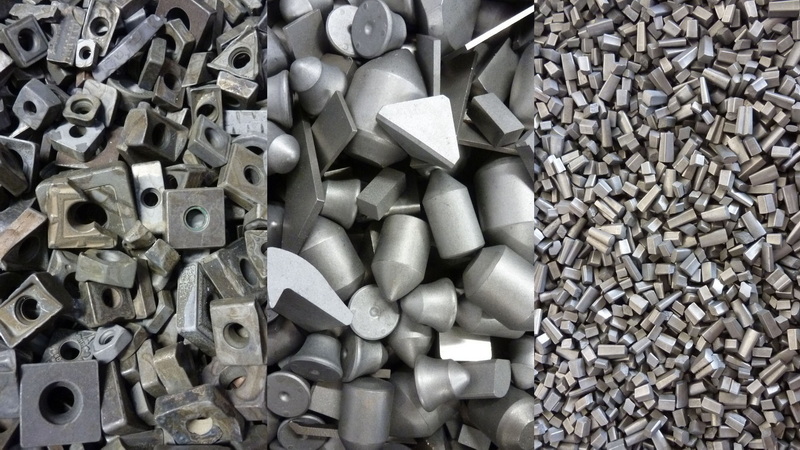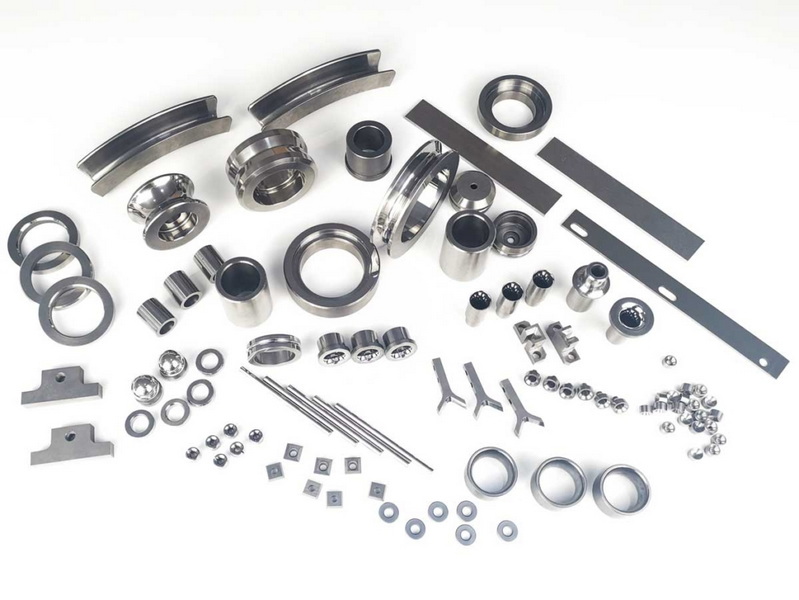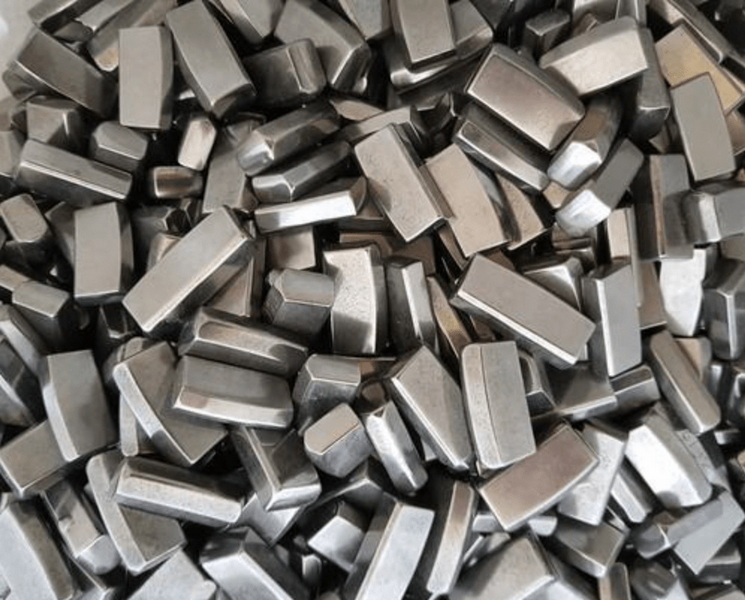Content Menu
● Introduction to Tungsten Carbide
>> Chemical Composition
>> Physical Properties
● Applications of Tungsten Carbide
>> Aerospace and Aviation
>> Oil and Gas Production
>> Manufacturing and Industrial Processing
>> Power Generation
>> Consumer Electronics and Jewelry
● Manufacturing Process
>> Sintering Process
>> Powder Formulation
● Challenges and Future Developments
>> Environmental Considerations
● Conclusion
● Frequently Asked Questions
>> 1. What is the primary composition of tungsten carbide?
>> 2. What are the main applications of tungsten carbide?
>> 3. How is tungsten carbide manufactured?
>> 4. What are the key physical properties of tungsten carbide?
>> 5. What are the environmental considerations in tungsten carbide production?
● Citations:
Tungsten carbide is a highly dense and versatile material widely used in various industrial applications due to its exceptional hardness, wear resistance, and thermal properties. This article aims to explore the density of tungsten carbide, its properties, applications, and provide insights into its uses across different industries.

Introduction to Tungsten Carbide
Tungsten carbide, often abbreviated as WC, is a chemical compound consisting of tungsten and carbon atoms. It is known for its high density, which is typically around 14,500 kg/m³ to 15,600 kg/m³, depending on its composition and manufacturing process[1][7]. This density is significantly higher than that of steel, making tungsten carbide one of the densest materials used in industrial applications.
Chemical Composition
Tungsten carbide is primarily composed of tungsten and carbon, with the most common form containing about 94% tungsten and 6% carbon by weight[2]. The addition of metallic binders like cobalt or nickel enhances its toughness and ductility, creating a cermet (ceramic-metallic composite) that combines the hardness of ceramics with the resilience of metals.
Physical Properties
- Density: As mentioned, tungsten carbide has a high density, ranging from 14,500 kg/m³ to 15,600 kg/m³[1][7].
- Hardness: It is extremely hard, ranking about 9.0–9.5 on the Mohs scale, with a Vickers hardness number around 2600[4][5].
- Melting Point: Tungsten carbide has a very high melting point, typically between 2,785°C and 2,830°C[4][7].
- Thermal Conductivity: It exhibits a thermal conductivity of approximately 110 W/m·K, which is crucial for efficient heat dissipation in high-temperature applications[1][5].
Applications of Tungsten Carbide
Tungsten carbide's unique properties make it indispensable in various industries:
Aerospace and Aviation
In the aerospace industry, tungsten carbide coatings are used to protect critical engine components such as turbine blades and compressor seals from wear and erosion. Its ability to maintain structural integrity under extreme stress conditions is vital for ensuring the reliability of aircraft engines. Additionally, tungsten carbide is used in rocket nozzles due to its high melting point and resistance to thermal shock.
Oil and Gas Production
The oil and gas industry utilizes tungsten carbide coatings to extend the life of drilling equipment and production components. These coatings provide exceptional wear resistance and corrosion protection in high-pressure environments, significantly reducing maintenance costs. Tungsten carbide is also used in drill bits to enhance drilling efficiency and durability.
Manufacturing and Industrial Processing
Tungsten carbide is extensively used in cutting tools and wear components in metal forming and processing applications. Its hardness and wear resistance significantly extend the service life of tools in high-speed machining operations. Additionally, it is used in injection molding tools to ensure precision and durability in producing high-quality plastic parts. The use of tungsten carbide in machine parts also helps reduce downtime and improve overall manufacturing efficiency.
Power Generation
In power generation, tungsten carbide coatings protect turbine components from erosion caused by steam and high-temperature gases. This helps maintain efficient operation in both conventional and renewable energy systems. Its high thermal conductivity also aids in efficient heat transfer, enhancing the overall efficiency of power generation equipment.
Consumer Electronics and Jewelry
Tungsten carbide is also used in consumer electronics and jewelry due to its durability and aesthetic appeal. In jewelry, it is valued for its scratch resistance and luxurious appearance. In electronics, it is used in high-wear components such as connectors and switches.

Manufacturing Process
Tungsten carbide is typically manufactured as an ultra-fine ceramic powder, which is then agglomerated or fused with metallic binders. The resulting material is sintered to form the desired shapes for various applications[2].
Sintering Process
The sintering process involves heating the tungsten carbide powder under high pressure to create a solid, cohesive structure. This process can be enhanced by adding binders like cobalt, which improve the material's toughness without compromising its hardness[4].
Powder Formulation
The powder formulation is critical for achieving consistent coating quality. The particle size distribution and morphology directly impact the final performance of the tungsten carbide coatings. Advanced techniques such as plasma spraying and high-velocity oxy-fuel (HVOF) spraying are used to apply these coatings efficiently.
Challenges and Future Developments
Despite its numerous advantages, tungsten carbide faces challenges related to its high cost and the complexity of its manufacturing process. However, ongoing research aims to improve production efficiency and reduce costs, making it more accessible for a wider range of applications.
Environmental Considerations
The environmental impact of tungsten carbide production is also a focus area. Efforts are being made to ensure sustainable sourcing of tungsten and to minimize waste during the manufacturing process. Recycling technologies are being developed to recover tungsten from scrap materials, further reducing the environmental footprint.
Technological Advancements
Advancements in nanotechnology and advanced materials science are expected to enhance the properties of tungsten carbide further. For instance, nanostructured tungsten carbide coatings have shown improved wear resistance and reduced friction, which could lead to even more efficient applications in the future.
Conclusion
Tungsten carbide, with its density ranging from 14,500 kg/m³ to 15,600 kg/m³, is a highly versatile material that plays a crucial role in various industrial sectors. Its exceptional hardness, wear resistance, and thermal properties make it indispensable for applications requiring durability and performance under extreme conditions.

Frequently Asked Questions
1. What is the primary composition of tungsten carbide?
Tungsten carbide is primarily composed of tungsten and carbon, with the most common form containing about 94% tungsten and 6% carbon by weight[2].
2. What are the main applications of tungsten carbide?
Tungsten carbide is used in cutting tools, aerospace components, oil and gas equipment, power generation, and consumer electronics due to its hardness and wear resistance[2][3].
3. How is tungsten carbide manufactured?
Tungsten carbide is manufactured as an ultra-fine powder, which is then agglomerated or fused with metallic binders and sintered to form the desired shapes[2].
4. What are the key physical properties of tungsten carbide?
Key properties include a high density of 14,500 kg/m³ to 15,600 kg/m³, a melting point between 2,785°C and 2,830°C, and a hardness ranking of about 9.0–9.5 on the Mohs scale[1][4][7].
5. What are the environmental considerations in tungsten carbide production?
Efforts are being made to ensure sustainable sourcing of tungsten and minimize waste during the manufacturing process to reduce the environmental impact[4].
Citations:
[1] https://material-properties.org/tungsten-carbide-density-strength-hardness-melting-point/
[2] https://www.linde-amt.com/resource-library/articles/tungsten-carbide
[3] https://eurobalt.net/blog/2022/03/28/all-the-applications-of-tungsten-carbide/
[4] https://en.wikipedia.org/wiki/Tungsten_carbide
[5] http://www.tungsten-carbide.com.cn
[6] https://www.sollex.se/en/blog/post/about-cemented-tungsten-carbide-applications-part-1
[7] https://www.webelements.com/compounds/tungsten/tungsten_carbide.html
[8] https://stock.adobe.com/search?k=tungsten+carbide
[9] https://www.itia.info/applications-markets/
















